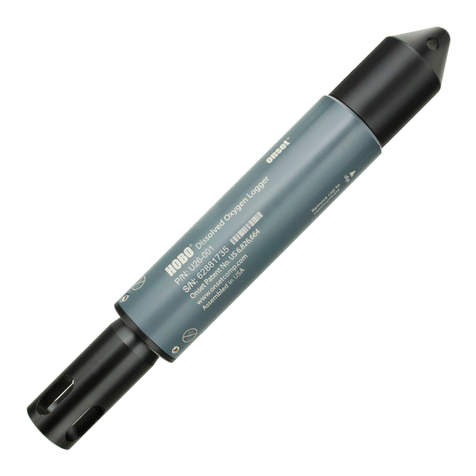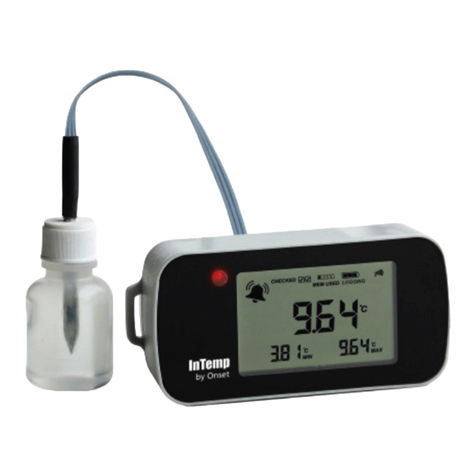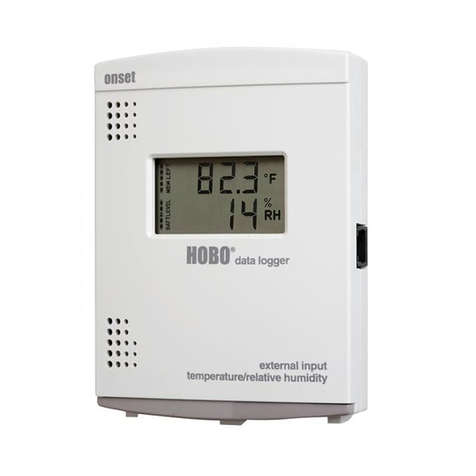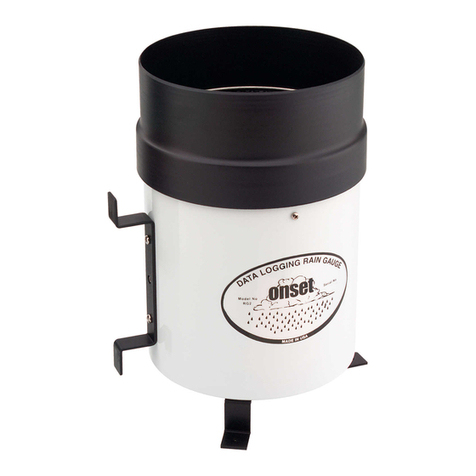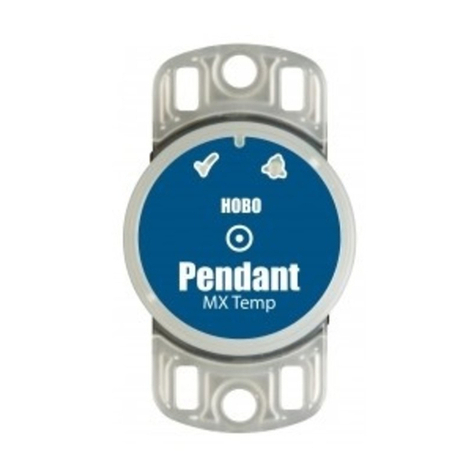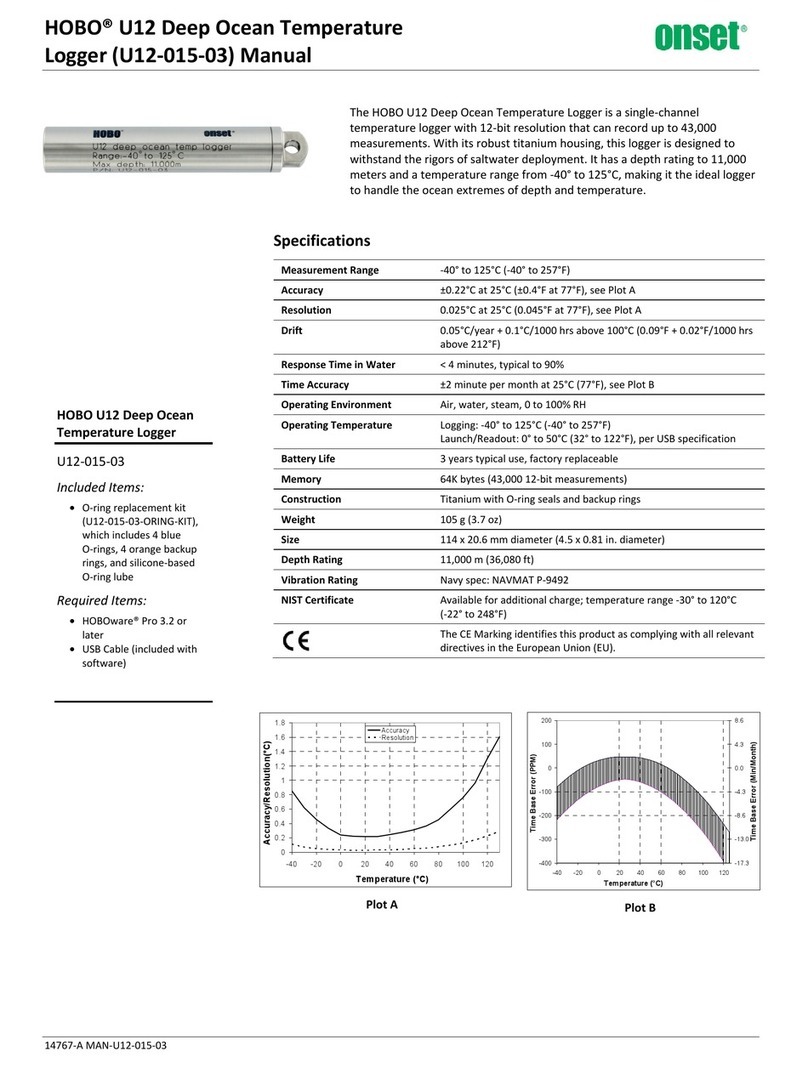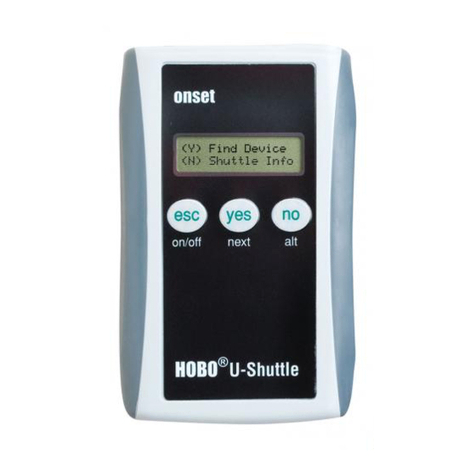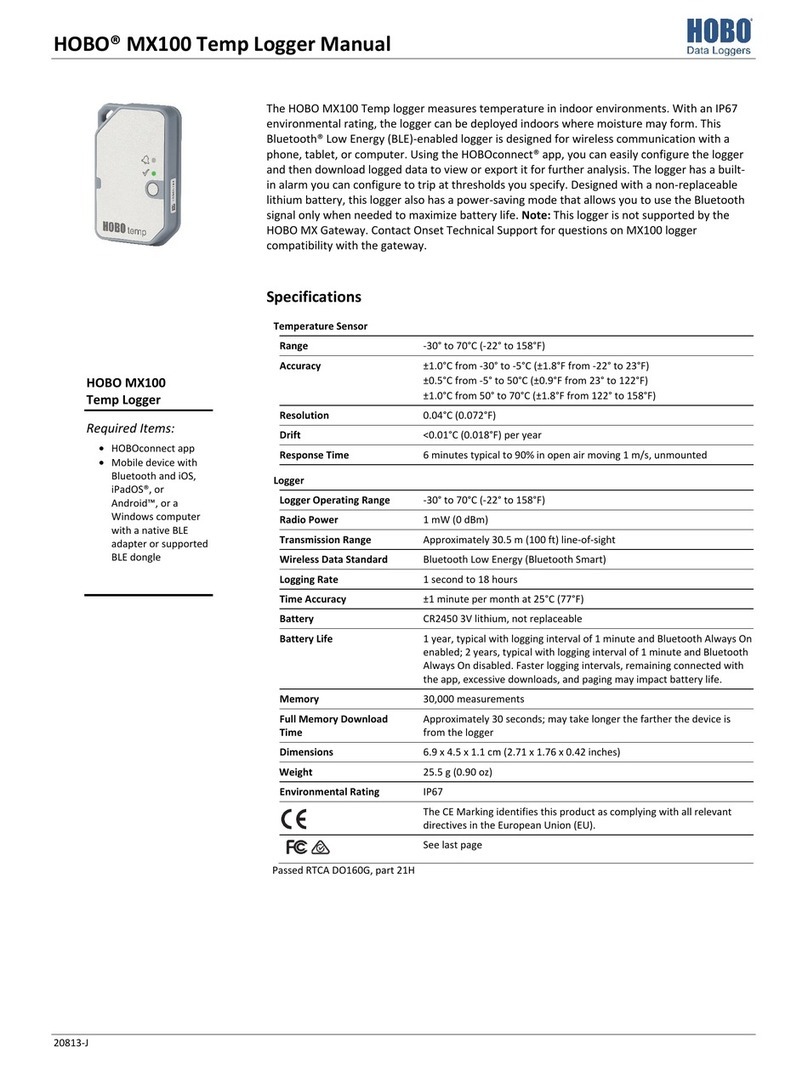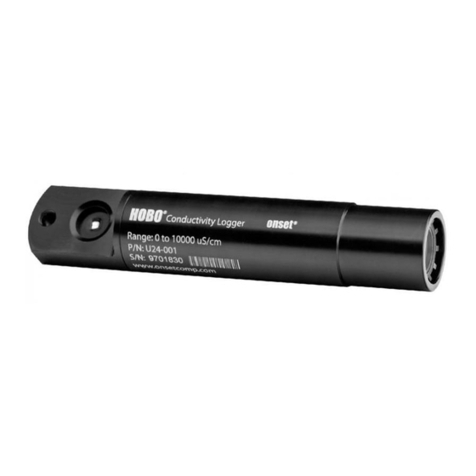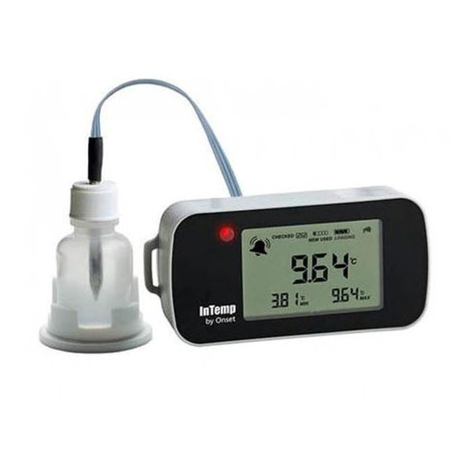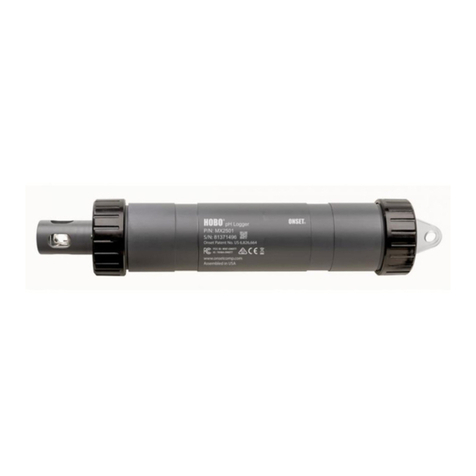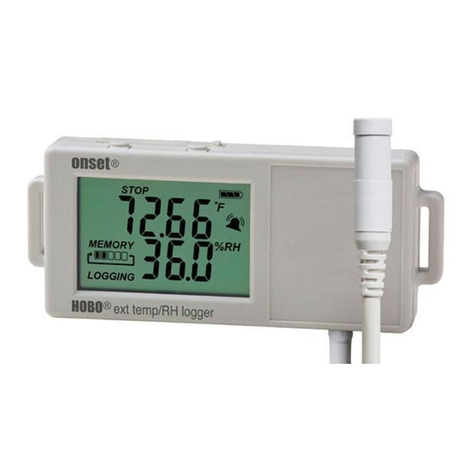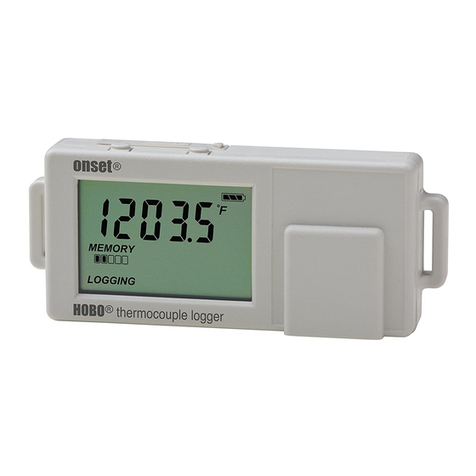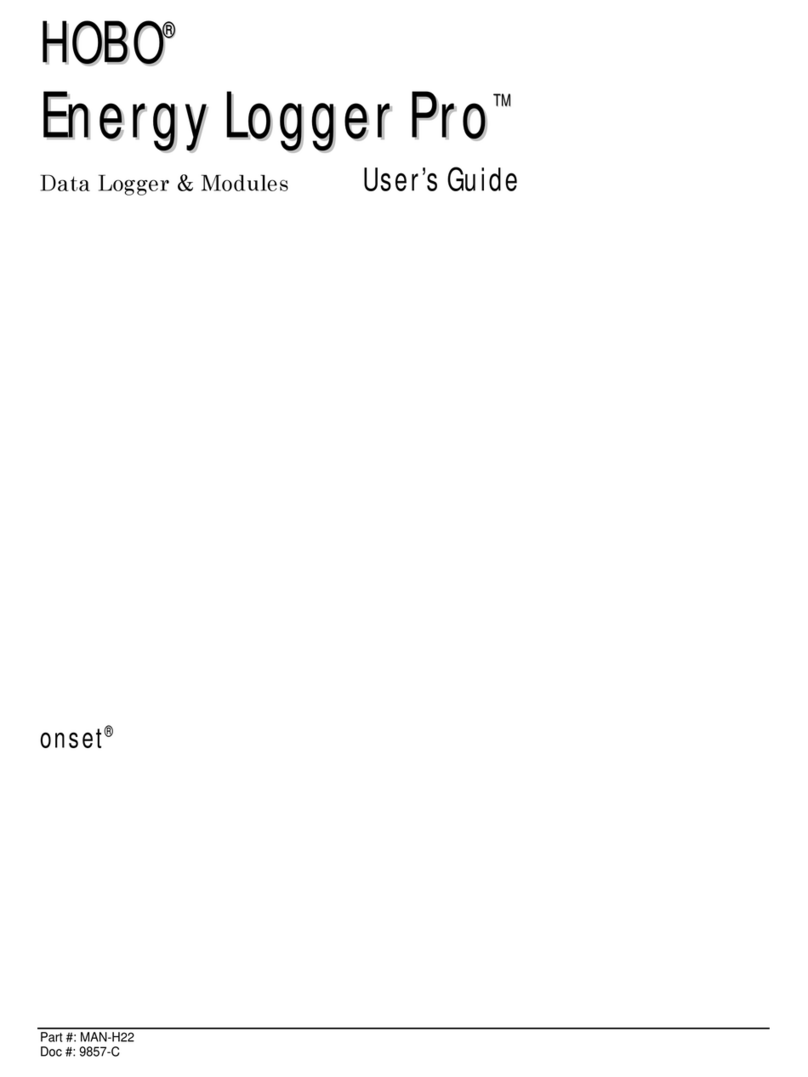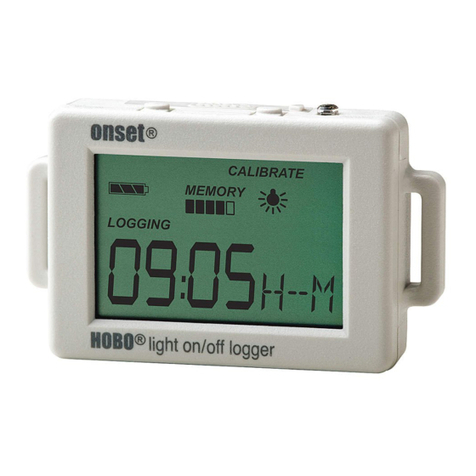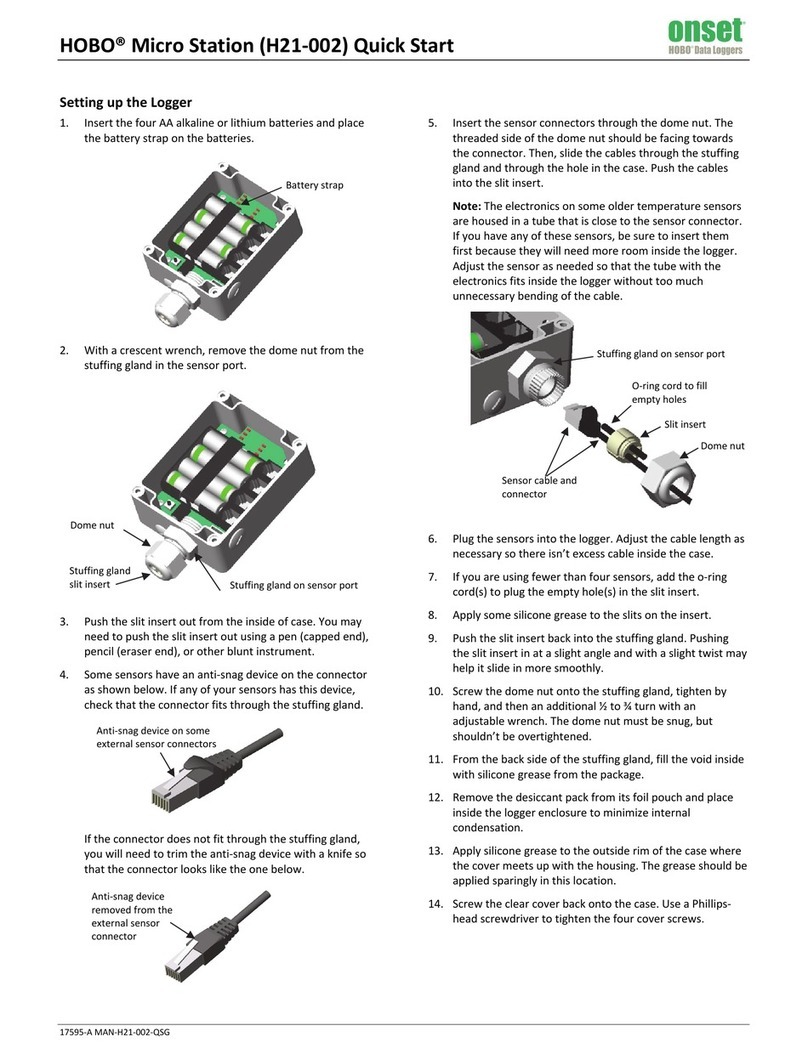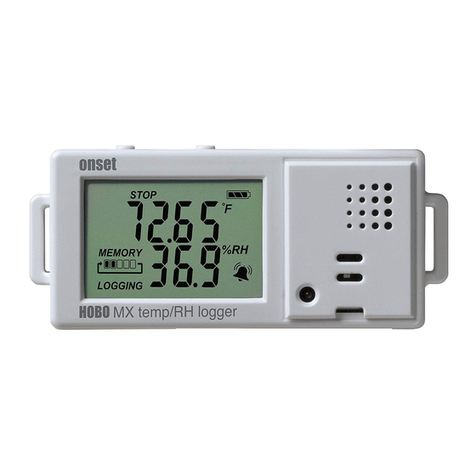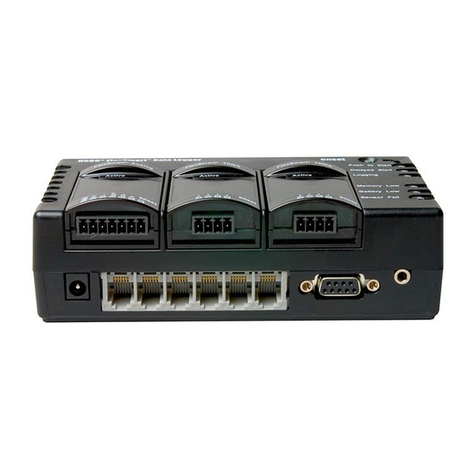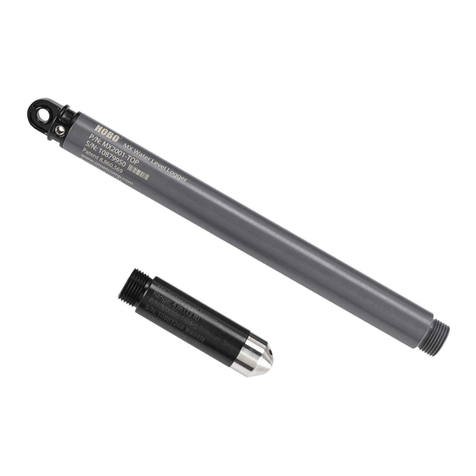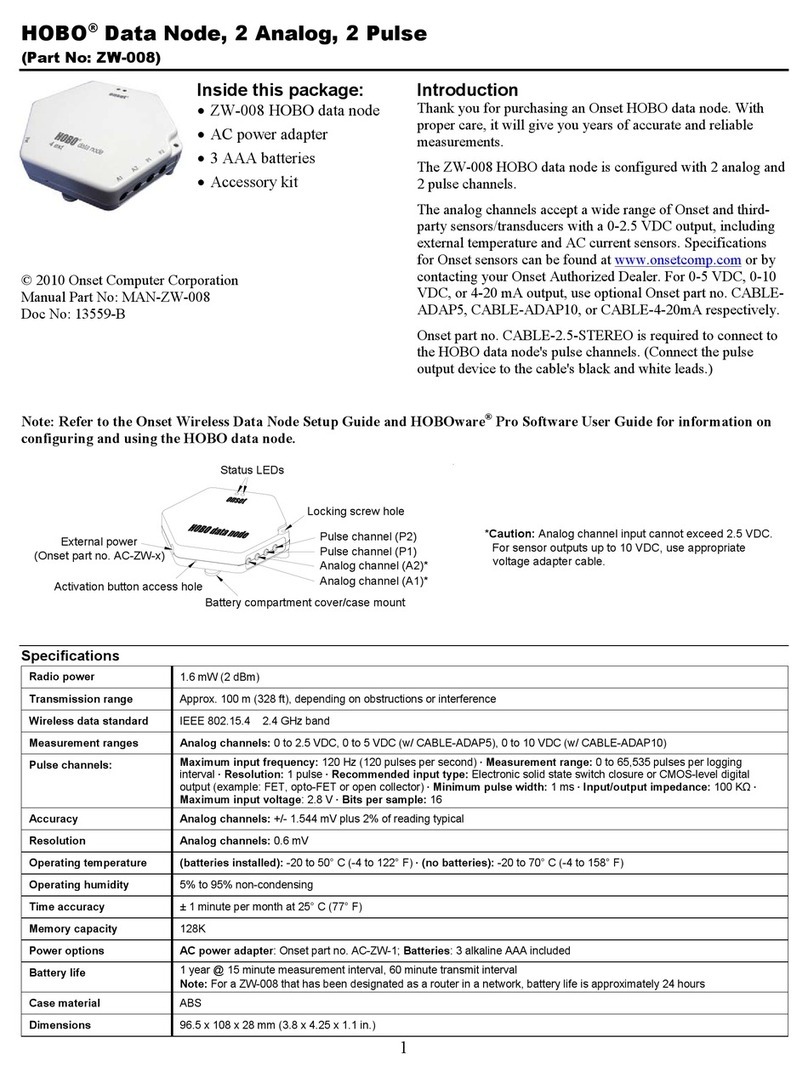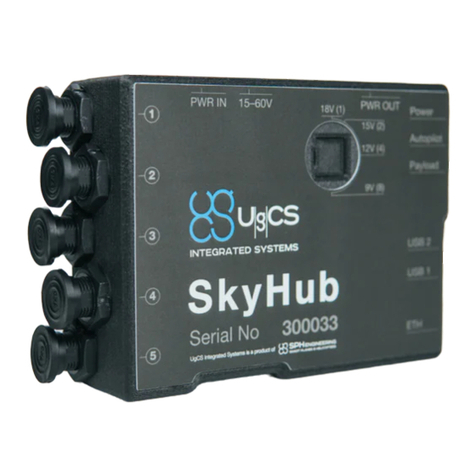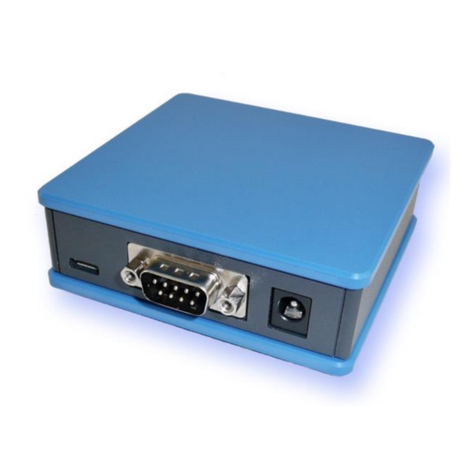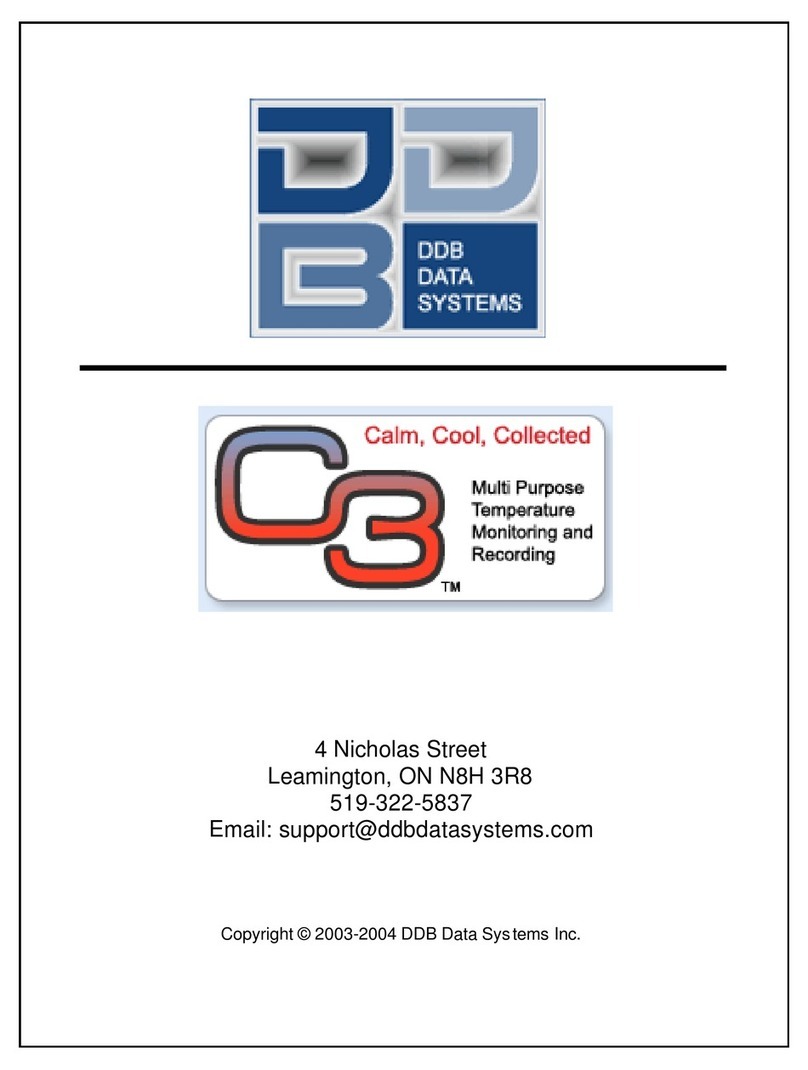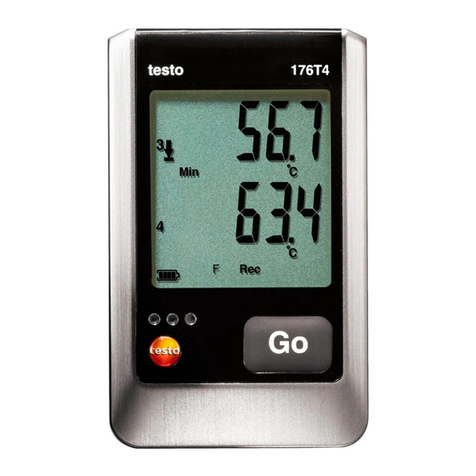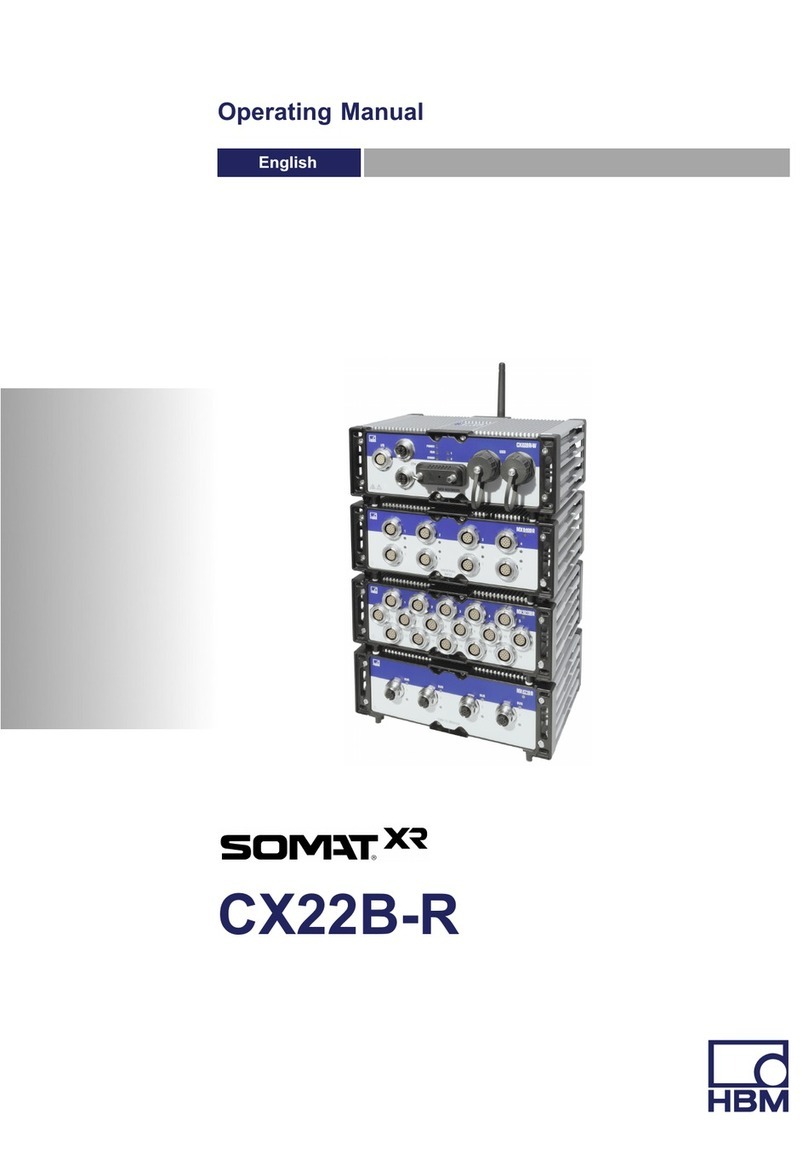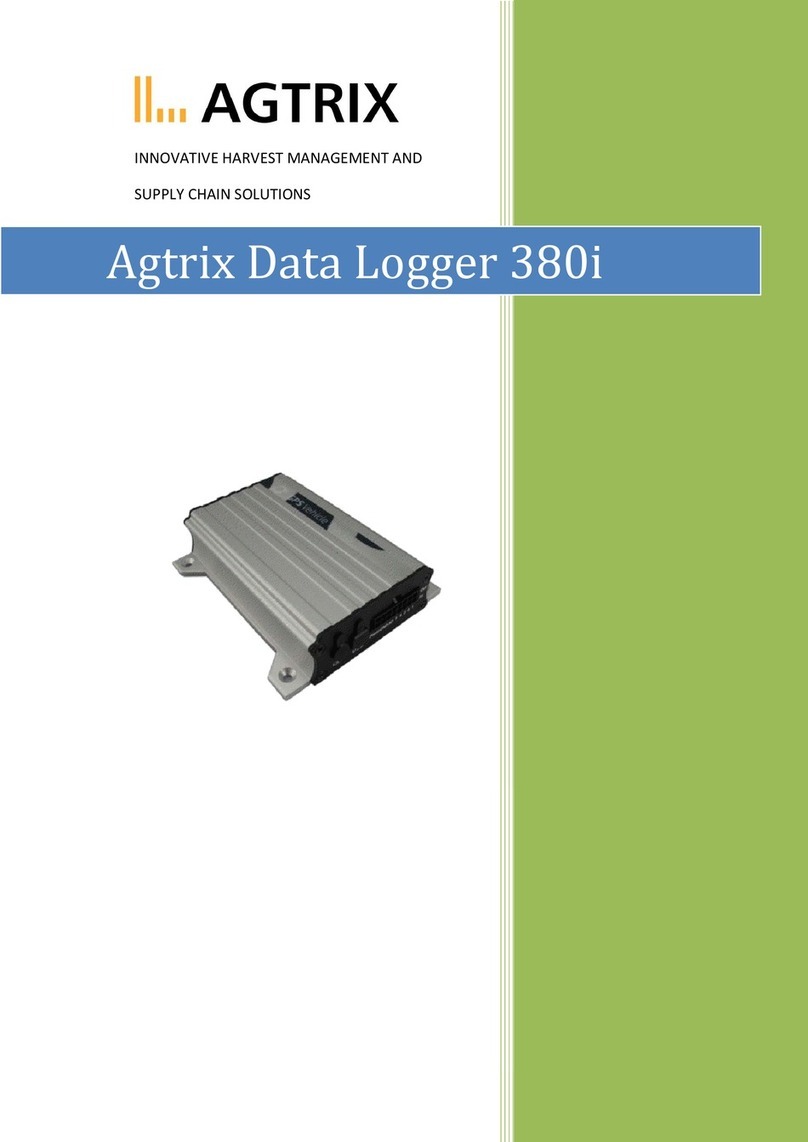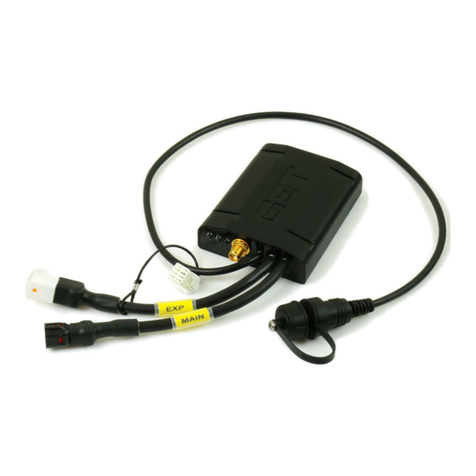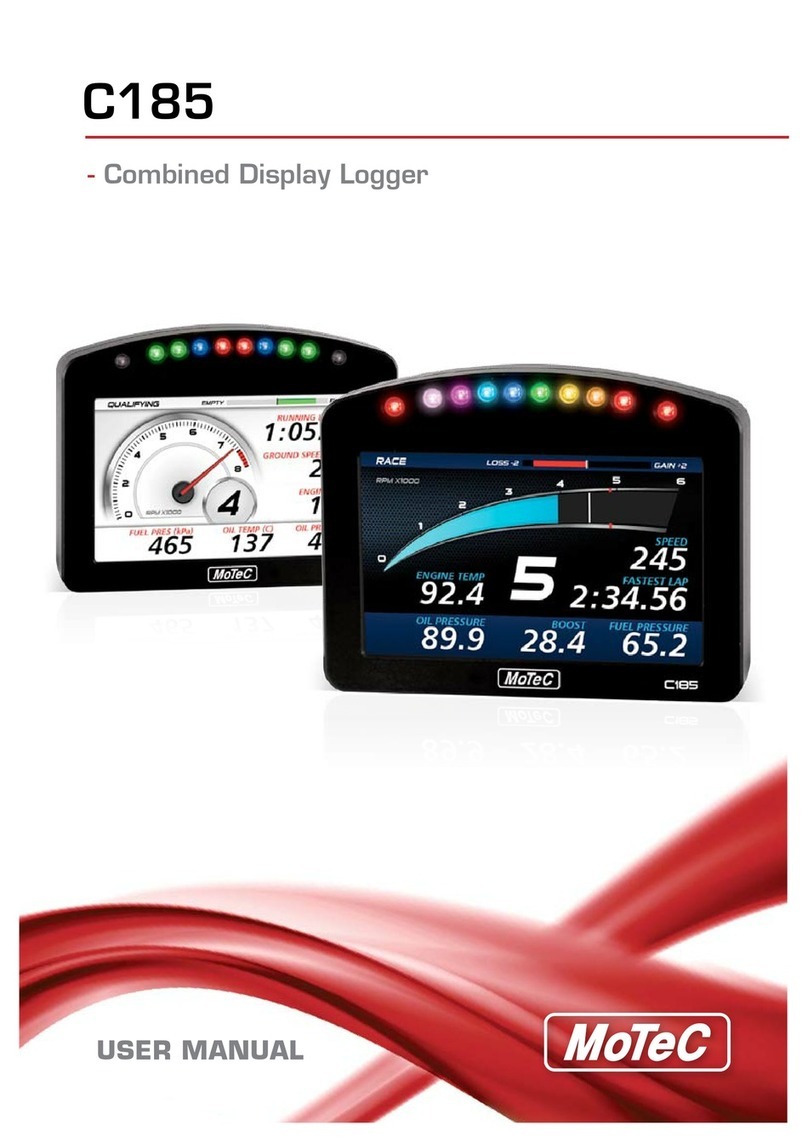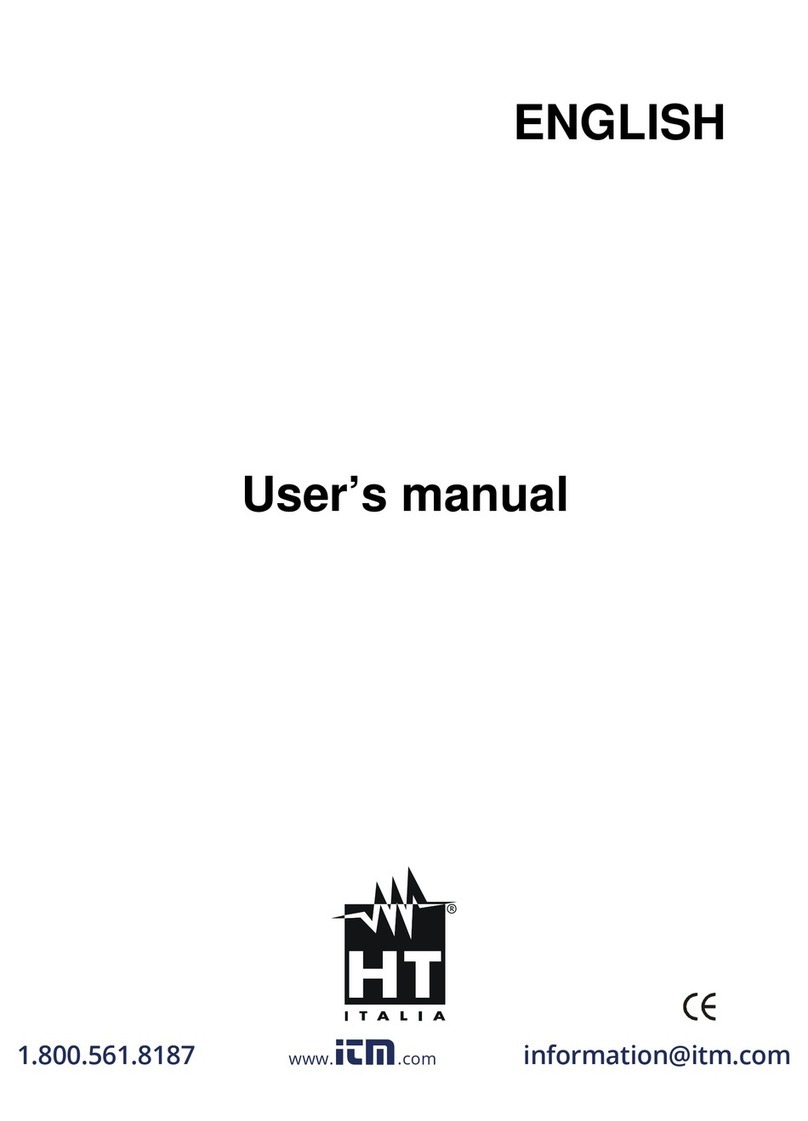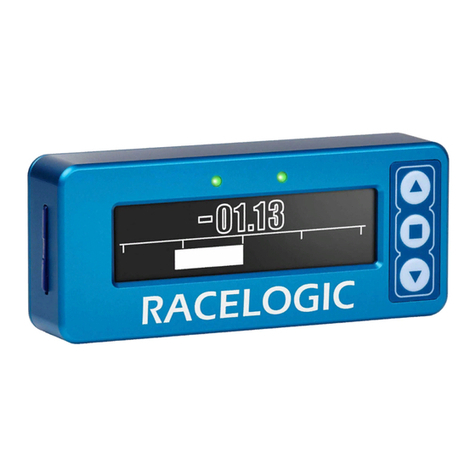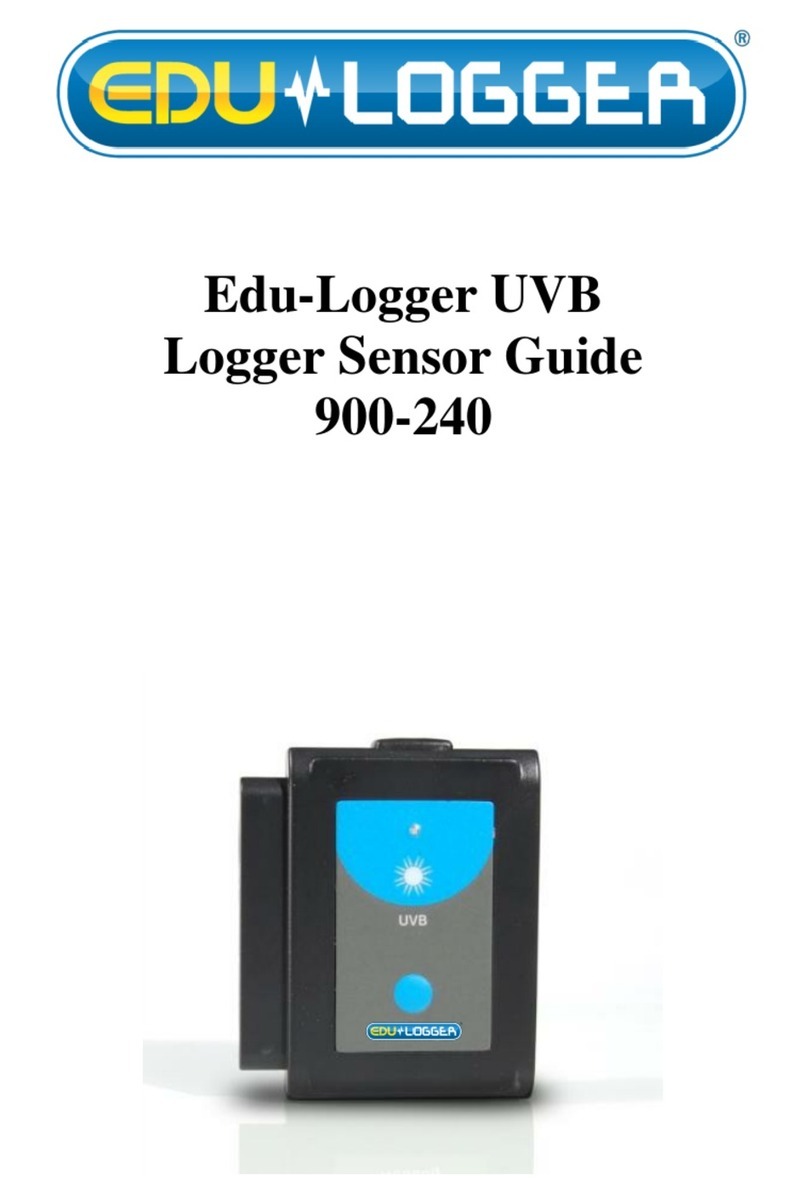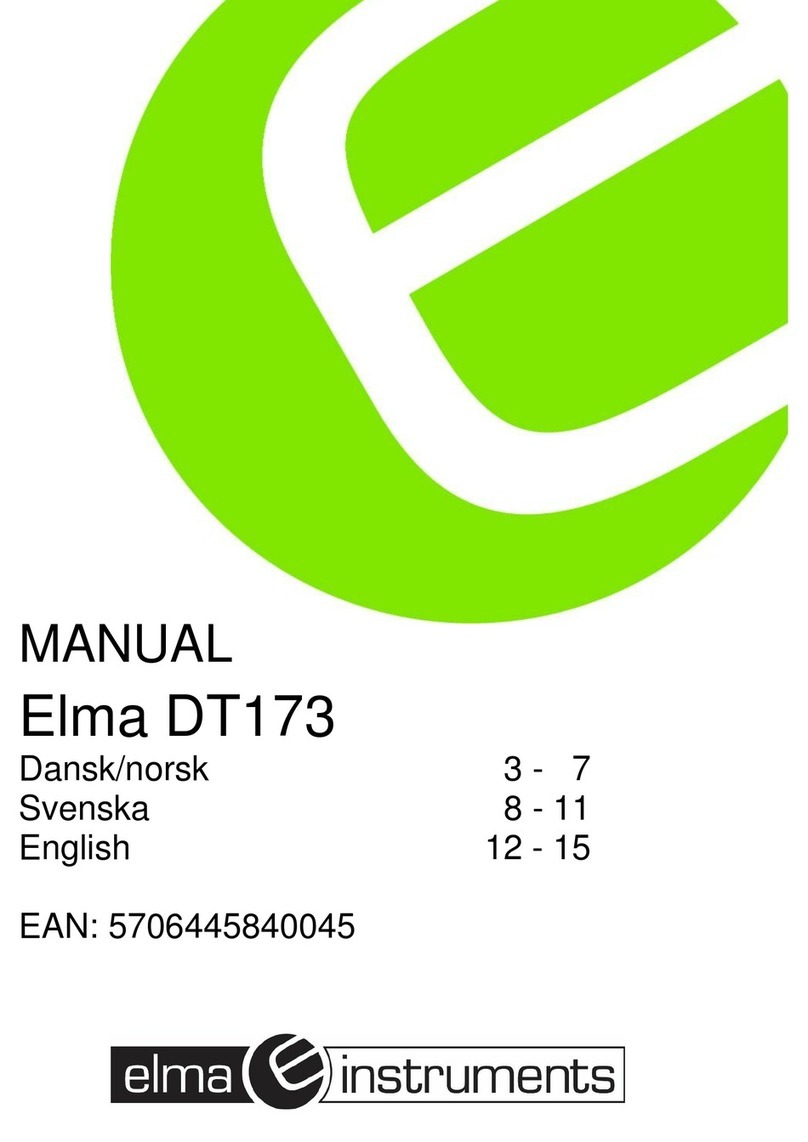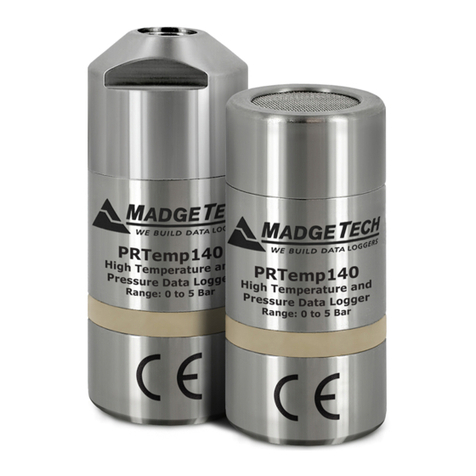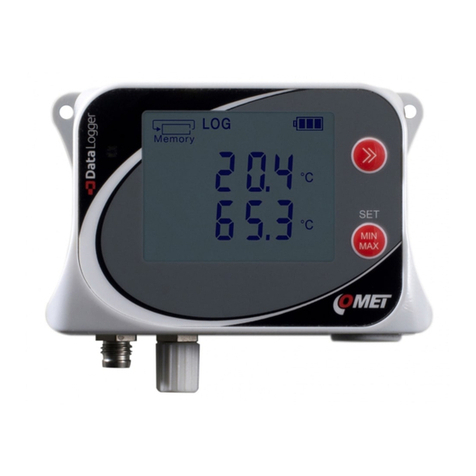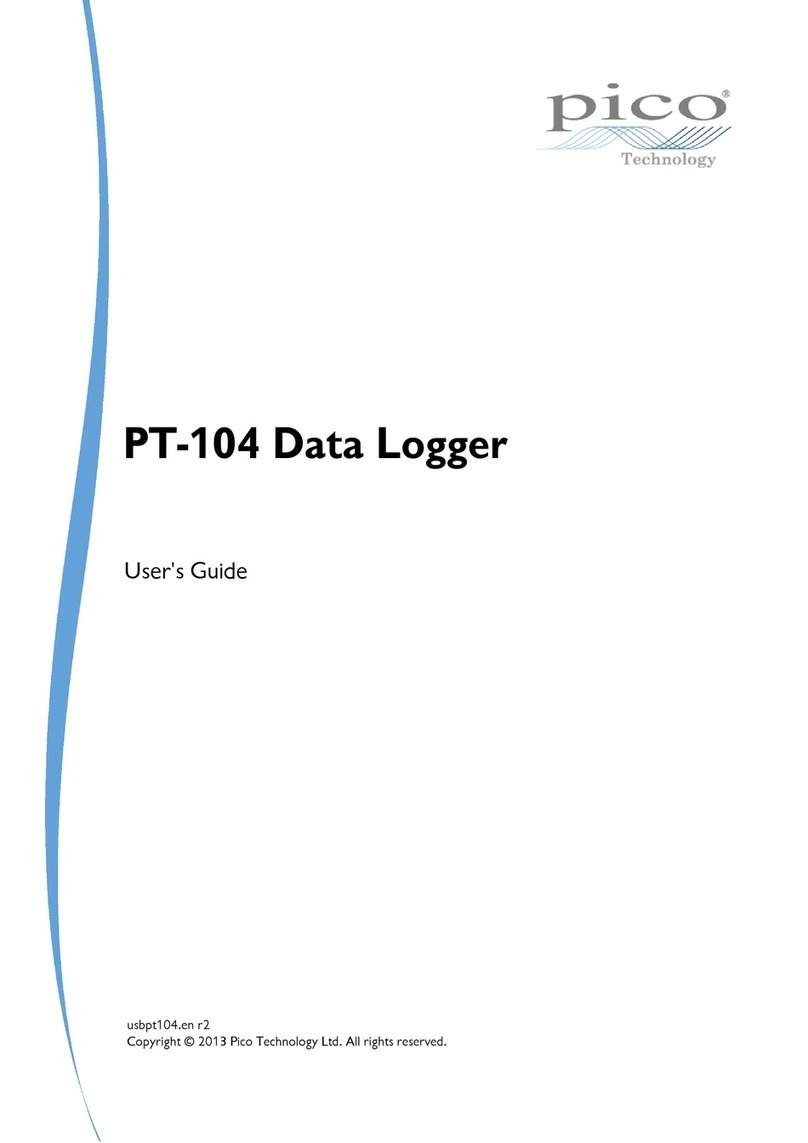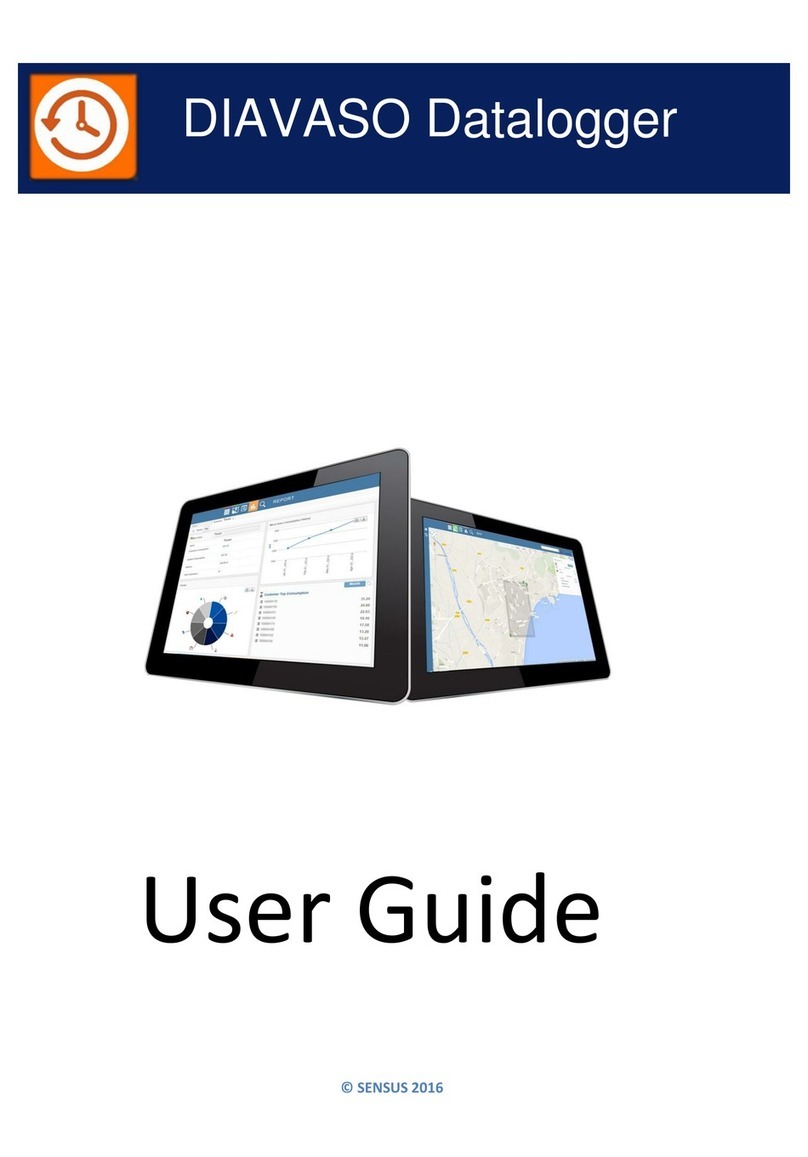
HOBO 4-Channel Analog Data Logger (UX120-006M) Manual
Burst Logging
Burst logging is a logging mode that allows you to set up more
frequent logging when a specified condition is met. For
example, let’s say the logger has a temperature sensor
connected to channel 1 and is recording data at a 5-minute
logging interval. Burst logging is configured on channel 1 to log
every 10 seconds when the temperature goes above 85°F (the
high level) or falls below 32°F (the low level). This means the
logger will record data every 5 minutes as long as the
temperature remains between 85°F and 32°F. Once the
temperature reaches 90°F, for example, the logger will switch
to the faster logging rate and record data every 10 seconds
until the temperature falls back below the high level (or 85°F in
this case). At that time, logging then resumes every 5 minutes
at the normal logging interval. Similarly, if the temperature falls
to 30°F, for example, then the logger would switch to burst
logging mode again and record data every 10 seconds. Once the
temperature rises back to 32°F, the logger will then return to
normal mode, logging every 5 minutes. To set up burst logging:
1. Select Burst for Logging Mode in the Launch Logger
window. If Burst has already been configured for this
logger, click the Edit button in the Launch Logger window.
2. In the Burst Logging window, select a sensor from the list. In
the following example, a temperature sensor was selected.
3. Select the High Level checkbox if you want to set up a
condition in which burst logging will occur when the sensor
reading rises above the high level value. Type in the value
or drag the red upper slider.
4. Select the Low Level checkbox if you want to set up a
condition in which burst logging will occur when the sensor
reading falls below the low level value. Type in the value or
drag the blue lower slider.
5. Repeat steps 2 through 4 for any additional sensors.
6. Set the burst logging interval, which must be less than the
logging interval. Select either a preset burst logging interval
or select Custom and enter your own interval. Keep in mind
that the more frequent the burst logging rate, the greater
the impact on battery life and the shorter the logging
duration.
7. Click OK when done. This will return you to the Launch
Logger window. Click the Edit button next to Logging Mode
in the Launch Logger window to make additional changes.
Notes:
Once the logger is launched, the high and low burst
logging levels are only checked when the logger's
LCD screen refreshes once every 15 seconds. Therefore,
if you set the logging interval to less than 15 seconds and
the sensor reading falls outside the levels, the burst
logging will not begin until the next 15-second refresh
cycle.
If high and/or low levels have been configured for more
than one sensor, then burst logging will begin when any
high or low condition goes out of range. Burst logging will
not end until all conditions on all sensors are back within
normal range.
The actual values for burst logging levels are set to the
closest values supported by the logger based on the
sensor type.
Once the high or low condition clears, the logging
interval time will be calculated using the last recorded
data point in burst logging mode, not the last data point
recorded in “normal mode.” For example, let’s assume
the logger has a 10-minute logging interval and logged a
data point at 9:05. Then, the high level was surpassed
and burst logging began at 9:06. Burst logging then
continued until 9:12 when the sensor reading fell back
below the high level. Now back in normal mode, the next
logging interval will be 10 minutes from the last burst
logging point, or 9:22 in this case. If burst logging had not
occurred, the next data point would have been at 9:15.
A New Interval event will appear on the plot (if you select
events for plotting in the Plot Setup window) each time
the logger enters or exits burst logging mode.
Statistics
Statistics is a logging mode in which the logger calculates
maximum, minimum, average, and standard deviation statistics
during logging, recording the results at each logging interval
based on samples taken at a rate you specify. This will result in
up to four additional series per sensor that record the following
information at each logging interval:
The maximum, or highest, sampled value,
The minimum, or lowest, sampled value,
An average of all sampled values, and
The standard deviation from the average for all sampled
values.
For example, let’s say the logging interval is set to 5 minutes
and the sampling interval is set to 30 seconds (with maximum,
minimum, average, and standard deviation all enabled). Once
logging begins, the logger will measure and record the actual
sensor values every 5 minutes. In addition, the logger will take
a sample every 30 seconds and temporarily store it in memory.
The logger will then calculate the maximum, minimum,
average, and standard deviation using the samples gathered
over the previous 5-minute period and log the resulting
value(s). When reading out the logger, this would result in 5
data series for each channel: one sensor series (with data
logged every 5 minutes) plus four maximum, minimum,
